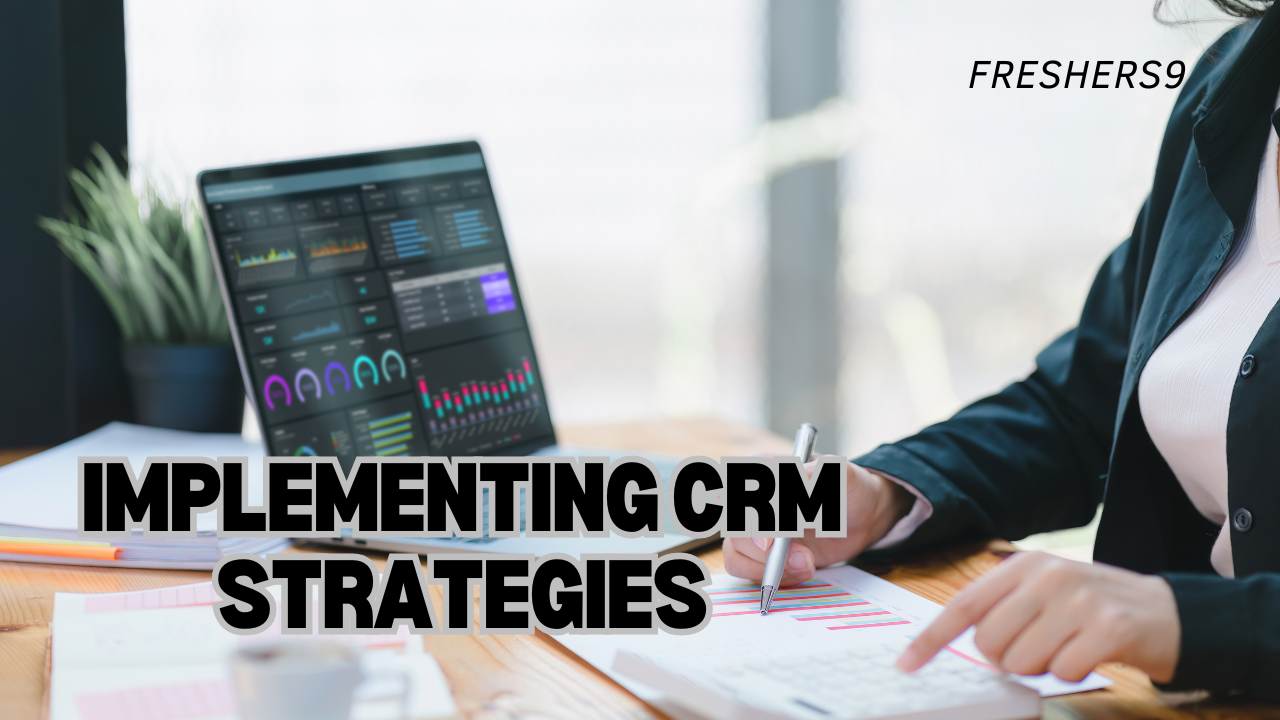Effective Customer Relationship Management: Strategies for Building Strong Connections
Creating strong customer relationships is crucial for any business's success. Here's a comprehensive guide on effective Customer Relationship Management (CRM) strategies to build and maintain strong connections with your customers:
Introduction to CRM
Customer Relationship Management (CRM) involves strategies and technologies to manage interactions with current and potential customers. It aims to improve business relationships, customer retention, and sales growth.
Understanding Customer Needs
Market Research and Analysis
- Conduct thorough market research to understand customer preferences, behaviours, and pain points.
- Use data analytics to gain insights into customer buying patterns and trends.
Segmentation and Personalization
- Segment your customer base based on demographics, behaviour, and buying history.
- Personalize communication and offers to cater to each segment’s specific needs and preferences.
Building Strong Connections
Effective Communication
- Establish clear channels for communication (e.g., email, social media, live chat).
- Respond promptly to customer inquiries and feedback to show responsiveness and care.
Customer Support and Service
- Provide exceptional customer service through multiple touchpoints.
- Implement a robust support system with trained personnel to resolve issues quickly and efficiently.
Transparency and Trust
- Be transparent about products, pricing, and policies.
- Build trust by delivering on promises and addressing concerns openly.
Implementing CRM Strategies

CRM Software Integration
- Utilize CRM software to centralize customer data and interactions.
- Automate routine tasks like follow-ups, reminders, and personalized communications.
Feedback Mechanisms
- Gather customer feedback through surveys, reviews, and social media.
- Use feedback to improve products/services and tailor offerings to customer preferences.
Loyalty Programs and Rewards
- Develop loyalty programs to incentivize repeat purchases and referrals.
- Offer exclusive rewards and discounts to valued customers.
Measuring Success
- Key Performance Indicators (KPIs)
- Track KPIs such as customer retention rate, customer satisfaction score (CSAT), and Net Promoter Score (NPS).
- Analyze trends and adjust strategies based on performance metrics.
Adapting to Customer Expectations
- Adaptability and Innovation
- Stay updated with market trends and technological advancements.
- Continuously innovate to meet evolving customer expectations and preferences.
Advanced CRM Techniques
Data-Driven Decision Making
- Leverage data analytics to gain deeper insights into customer behaviour and preferences.
- Use predictive analytics to anticipate customer needs and trends, enabling proactive engagement.
Omni-Channel Presence
- Ensure a seamless customer experience across all channels, including online, in-store, and mobile.
- Integrate customer interactions across these channels to maintain consistency and coherence in communication.
Customer Journey Mapping
- Create detailed maps of customer journeys to identify key touchpoints and opportunities for improvement.
- Optimize each stage of the customer journey to enhance the overall experience and increase satisfaction.
Personalized Marketing
- Utilize CRM data to tailor marketing campaigns to individual customers or segments.
- Implement targeted email marketing, personalized product recommendations, and customized offers to drive engagement.
Enhancing Customer Loyalty
Engagement and Community Building
- Foster a sense of community among customers through social media groups, forums, and events.
- Encourage customer engagement by creating opportunities for interaction and feedback.
Exceptional After-Sales Service
- Provide comprehensive after-sales support to ensure customer satisfaction post-purchase.
- Offer extended warranties, easy returns, and responsive technical support to build trust and loyalty.
Leveraging Technology
Artificial Intelligence and Chatbots
- Implement AI-powered chatbots to provide instant customer support and streamline interactions.
- Use AI to analyze customer data and deliver personalized experiences at scale.
Mobile CRM Solutions
- Adopt mobile CRM solutions to enable on-the-go access to customer data and interactions.
- Ensure that customer-facing mobile apps are user-friendly and provide valuable functionalities.
Customer Self-Service
- Develop self-service portals where customers can access information, resolve issues, and manage their accounts independently.
- Empower customers with tools and resources to enhance their experience and reduce reliance on support teams.
Building Long-Term Relationships
Consistent Value Delivery
- Continuously deliver value to customers through high-quality products, services, and experiences.
- Keep customers informed about new offerings, updates, and improvements.
Customer Advocacy Programs
- Encourage satisfied customers to become brand advocates by sharing their positive experiences.
- Implement referral programs that reward customers for bringing in new business.
Regular Communication
- Maintain regular, meaningful communication with customers through newsletters, updates, and personalized messages.
- Keep customers engaged and informed about relevant developments and opportunities.
Monitoring and Improving CRM Strategies
Regular CRM Audits
- Conduct regular audits of CRM processes and systems to identify areas for improvement.
- Ensure that CRM strategies align with business goals and customer expectations.
Continuous Learning and Training
- Invest in ongoing training for staff to keep them updated on CRM best practices and technologies.
- Encourage a culture of continuous learning and improvement within the organization.
Adapting to Feedback
- Regularly review customer feedback and adjust strategies accordingly.
- Be flexible and open to change to meet evolving customer needs and preferences.
Effective Customer Relationship Management is a dynamic and ongoing process that requires a strategic approach and a commitment to customer-centricity. By leveraging advanced CRM techniques, technology, and a focus on delivering consistent value, businesses can build strong, lasting connections with their customers. These relationships not only drive customer satisfaction and loyalty but also contribute significantly to long-term business success.